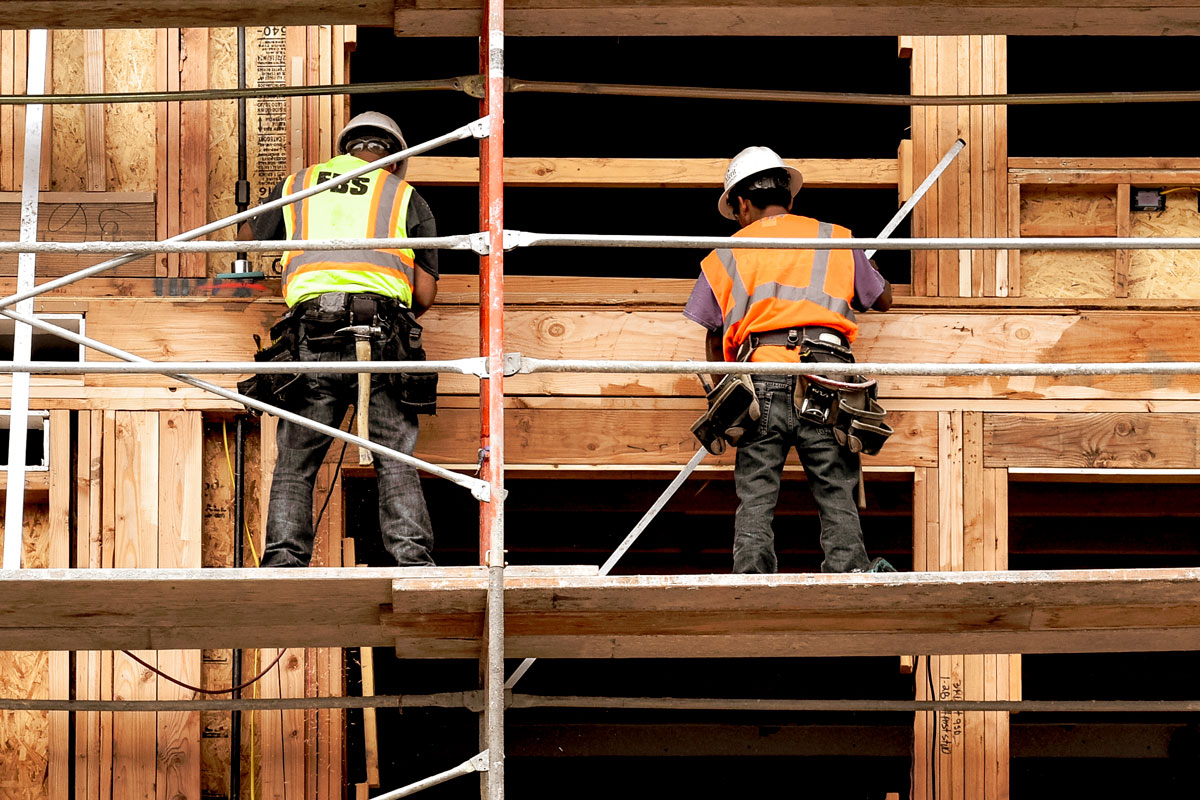
Construction Safety Matters
Putting Guardrails to Work for Your Safety Program
When it comes to keeping a workplace safe and OSHA compliant, it’s difficult to overstate the importance of guardrails. In fact, according to OSHA, falls from elevation account for the majority of fatalities within the construction industry – with over 300 fatal falls occurring each year. Yet, failure to provide fall protection in the form of guardrails is among the most-cited OSHA violations on an annual basis.
It almost goes without saying that having adequate fall protection is crucial when working from height. OSHA standards require some form of fall protection (e.g., guardrails, safety nets or fall arrest systems) to be in place at construction sites with vertical drops of 6 feet or more – except for certain tasks, such as scaffolding, in which vertical drops must exceed 10 feet before protection is needed. The type of fall protection necessary depends on several site features and the nature of work being performed.
As an employee, it’s important to understand the different fall protection methods that you may encounter on the job. In particular, guardrails are stationary safety barriers that can help deter access to vertical drops – thus minimizing the risk of falls at the worksite. Review this guidance to learn more about guardrails as a means of fall protection.
Guardrail Expectations
Put simply, guardrails are specially designed barriers aimed at keeping employees safely distanced from fall hazards on the job. In other words, guardrails are intended to help prevent falls from happening altogether, rather than protect you in the event that a fall occurs.
Under OSHA standards, guardrails must meet the following requirements:
- The height of the top railing in a guardrail must measure between 39 inches and 45 inches above the working surface, with the exception of certain situations (e.g., when the task at hand requires the use of stilts).
- Apart from the top railing, a guardrail must include additional protection in the form of one of these components:
- A middle railing – Such a railing must be located midway between the top railing and the working surface.
- Mesh or screens – These structures must extend from the top railing to the working surface, as well as across the openings between each railing support.
- Intermediate structures – Such components (e.g., balusters) must be set up in a way that leaves the openings between each railing support no greater than 19 inches wide.
- The top railing in a guardrail must be able to withstand at least 200 pounds of force, without the railing deflecting downward to a height of less than 39 inches above the working surface when such force is applied. The middle railing, mesh, screens or intermediate structures in a guardrail must be capable of handling at least 150 pounds of force.
- Toe boards should be installed on any guardrail where there exists the risk of worksite objects (e.g., tools or materials) falling on and potentially injuring anyone located below the elevated working surface.
- The components of a guardrail must be smooth to the touch, as rough or jagged surfaces could create other safety hazards (e.g., punctures or lacerations).
Pros and Cons of Guardrails
Guardrails are a valuable form of fall protection that offers numerous advantages. In addition to minimizing fall hazards at the construction site, guardrails necessitate minimal safety training prior to implementation.
Compared to other methods of fall protection – such as safety nets and fall arrest systems – guardrails are particularly beneficial to employees like you, seeing as they don’t require you to connect to any extra equipment (e.g., a harness) before working from height.
Also, other fall protection techniques are often only suitable for working from greater heights (e.g., more than 6 feet above the ground), whereas guardrails can be effective for working at a range of heights. Further, guardrails pose the lowest overall risk of fall-related injuries and deaths when ranked against other forms of fall protection.
However, guardrails are not a perfect fall protection solution. Although they require little training, guardrails can be more complicated and time-consuming to initially install at a worksite. As such, guardrails are often utilized at long-term project locations rather than at short-term worksites.
And, of course, it’s still important to not solely rely on guardrails as a means of fall protection on the job. Rather, make sure to diligently follow all worksite safety policies and procedures related to fall prevention whenever you must work from height.
Talk to the Fall Protection Pros
If guardrails are selected as a means of fall protection at your worksite, be sure to play your part in promoting a safe work environment by routinely inspecting these guardrails for potential problems. To learn more about fall protection, talk to the workplace-safety experts at VTC Insurance Group. You can reach us at 248.828.3377 or visit vtcins.com.
This blog is for informational purposes only and is not intended as legal advice.


